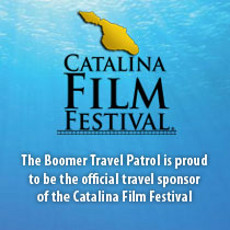Full Article:
Our world would be a hugely different place today but for the discovery of sailing and the subsequent role played by the development of galleons, schooners and the tall ships of the day.
Without sailing Christopher Columbus’s fleet of; Nina, Pinta and Santa Maria would never have ‘sailed the blue’ in 1492 to discover the Americas – albeit that Columbus stopped over for barely five days in The Bahamas during his quest to discover a lucrative trade route to The Indies.
But for its flotilla of tall ships, Great Britain would never have ruled the waves to develop the British Empire which, at its peak, held sway overthe lives of 458 million people inhabiting a landmass in excess of 13 million square miles – a quarter of the earth’s surface.
And, Without the Mayflower, the Pilgrim Fathers may never have set sail in 1620 to land in Plymouth, Massachusetts where they forged the first colonies that were to become known as New England.
So, you see, maritime heritage has, in one way or another, helped in the expansion and diversification of the planet and in shaping most of our lives.
All of which, may help to explain just why the sight of a tall ship under full sail today evokes such profound inner joy deep within. Somehow perhaps, we feel and understand that this was how our ancestors first travelled and we connect, albeit subliminally, with their burgeoningdreams of finding new land and maybe a better life - the very ethos of why we love to travel.
With all this in mind, in August, I drove the breadth of England – almost 400 miles from Kent to Cornwall – on a heading for Falmouth where I witnessed the sheer magnificence of the Tall Ships Regatta – a four-day segment of the Tall Ships Race of 2014.
Founded in 1956 by London-based lawyer Bernard Morgan, supposedly as the last hoorah to the ‘bygone age’ of tall ships, The Tall Ships Race attracted such interest it developed into an annual event, held in European waters and covering hundreds of nautical miles.
Nowadays, the race is organised by Sail Training International, who took up Mr Morgan’s ethos of encouraging international friendships through the training of young people giving them the required skills and dedication to ocean sailing through an annual tall ships race.
For the record, the overall winner of this year’s race was the B-Class 1912 UK-based Duet a 19-metre wooden gaff yawl, however, the most coveted award went to the ship that collected the Friendship Trophy – awarded to the vessel that, in the opinion of the other captains and crews, contributed the most towards international friendship and understanding –which went to Gulden Leeuw, a 53-metre Dutch registered 1937 steel A-Class Schooner.
The Falmouth Regatta garnered major sponsors and attracted crowds in excess of 250,000, who came to the picture postcard Cornish townto see the 44 tall ships moored in its harbour - the third deepest natural harbour in the world.
Organisers estimated that the event boosted the local economy to the tune of a staggering £15 million but, away from facts and figures and, what mattered most to me, was that the Tall Ships Regatta is simply good for your soul.
The town itself is crammed with seafood restaurants and rustic pubs, but you will also enjoy the boutiques, fudge shops and of course, try the Cornish pasty stores – which are a must.
During Regatta Week I stayed in two very different locations in order to sample all the region had to offer. Firstly, two luxurious nights at the four-star Budock Vean Hotel, situated a 10 minute drive from the town.
Nestled at the head of a stunningly beautiful valley that meanders down to the Helford River, the hotel is set amongst 32 acres of manicured gardens that will have the gardeners among you purring. Organically managed, the owners have introduced new and varied species alongside the indigenous varieties and now boast a plant stock that numbers over 350,000 – and they even let you take your own cuttings home!
Golf, tennis, snooker and kayaking are also on offer at this quintessentially English country house hotel. The breakfasts are stunning and the hotel delivers its own daily newsletter The Vean, to keep guests informed of local events.
Hotel guests can play the nine-hole golf course laid down in 1922 by legendary Scottish course designer James Braid, the golf professional and five-time winner of The Open who, in later life, constructed the King’s Course at Gleneagles Hotel - the host venue to the Ryder Cup for 2014.
Using all his skills, Braid shoehorned a nine-hole, 18-tee, 5,235-yeard course into this area of outstanding natural beauty to create an ideal course for mid-to-high handicappers.
There are tight dog-legs and miniscule greens aplenty on this undulating parkland course that simply makes you think about plotting a way around, rather than blasting it. Best of all, golf is free to hotel guests.
Evening meals at Budock Vean are an occasion in their own right and guests are encouraged to ‘dress up’ for dinner with gents in jacket and tie and ladies in their ‘Sunday best’.
The menu, made up from locally sourced ingredients, is varied and delicious and the incredibly well-drilled waiting staff is on hand to meet your every culinary need. The food and wine is not cheap but, with this level of service, you would expect as much. See menus and more detail at Budock Vean Hotel.
Resplendently marketed as the Hotel on the River, The Budock Vean also tempts you with an indoor pool, sauna, spa facilities and an outdoor hot tub and, from the hotel’s jetty you can catch a water taxi to nearby riverside hostelries which may include your own run in with the FBI – the nickname given by locals to the nearby Ferry Boat Inn.
Situated almost on the beach at Helford River, the FBI offers great food, real ales and a stunning view. You can also take ferry boats and hire kayaks from here. See more about the FBI.
For the remainder of my stay I drove two miles nearer to the coast and Falmouth town centre to rent a holiday cottage on the Maenporth Estate, a gated community of modern holiday lets overlooking the tranquil beach of Maenporth Bay.
Every cottage and, indeed, the estate itself, has all you need for a wonderful self-catering stay. My well-appointed cottage was simply a ‘home-from-home’, with all the facilities you could want including; washing machine, dryer, dishwasher, TV, DVD player, dining area, together with modern, spotlessly clean bathrooms and quiet, roomy bedrooms.
The estate, which would be fantastic for the grandchildren, also has a play area with BBQ facilities, tennis courts and indoor swimming pool, added to which, you’re hardly a five-minute walk from the beach. For more prices and booking details see Holiday Cornwall.
If you don’t fancy cooking, one of the best fish restaurants in Cornwall just happens to sit beside the estate entrance. The Cove deservedly gets a five star rating on tripadvisor for its unique blend of flavoursome tapas created by award-winning chef Arty Williams, added to which, the view is stunning. See more at The Cove.
My final day in Cornwall deliberately coincided with the Parade of Sail, the highlight of the Regatta, which I witnessed from the parapets of Pendennis Castle – a fortress built on a rugged peninsula by King Henry VIII between 1539 and 1545 to defend the Falmouth harbour entrance.
Such a dramatic vantage point merely amplified the ‘wow factor’ as the fleet of 44 vessels emerged in line behind the 110-metre Polish tall ship, Dar Mlodziezy, followed by a veritable armada of privately owned yachts and powerboats, bobbing along in the wake of these mighty merchants of the sea and paying homage to the Regatta. It was one of those times when hairs stand to attention on the back of your neck and you’re not really sure why.
Elsewhere, thousands flocked to the coves and shoreline of Falmouth Bay for their own vantage point to this, the rarest of modern-dayspectacles.
Falmouth’s Harbour Master, Mark Sansom, confirmed it was the largest number of craft he had witnessed in his 20-plus years in the job. An observation that Falmouth Tall Ships chairman, John Hick, could only agree with, in saying: “Without a doubt there were more craft, and more people on the water than any of us have seen in living memory.
“This was the grand finale of months and months of hard work and detailed planning and Cornwall has indeed done itself proud. Hundreds of people have worked tirelessly to make this all possible.”
James Stevens, the race chairman for event organisers Sail Training International, said: “The whole atmosphere of the town was really buzzing in a way unique to Falmouth with a real feeling of pride from the people of the town. This energy invigorated the whole event; the ships, their captains and their crews, who all sailed out of here with Cornish memories that will stay with them for life.”
And the same could be said for me and the rest of the 2014 race spectators. Once witnessed, the Tall Ships Race is a sight you will never forget. So make sure it’s inked onto your bucket list!
Mark Pennell travelled to Falmouth courtesy of Visit Cornwall, Holiday Cornwall and Budock Vean Hotel. With thanks to Louise, of Louise Midgley Communications.
October 25, 2023






